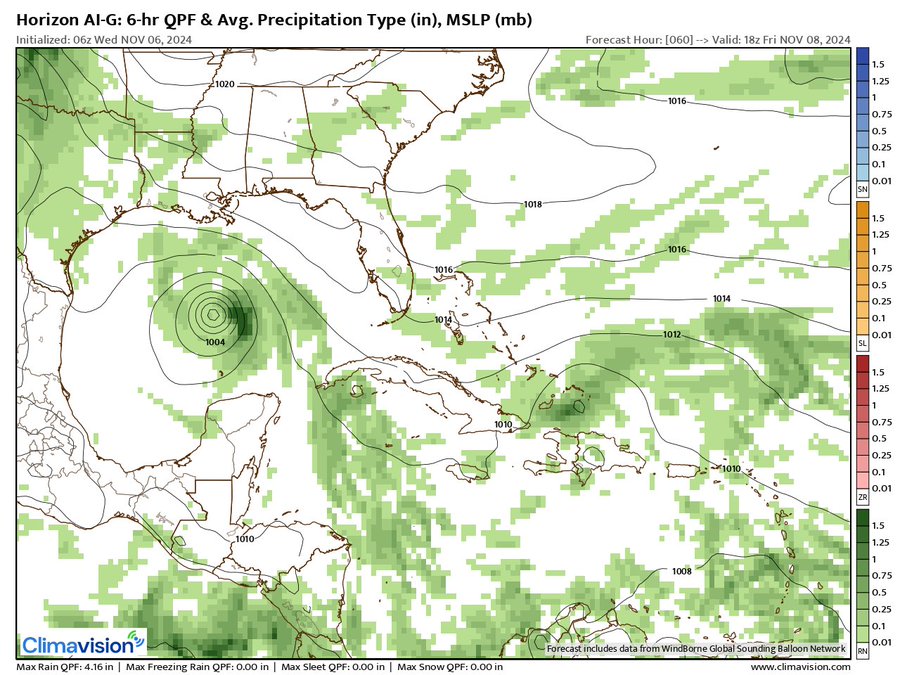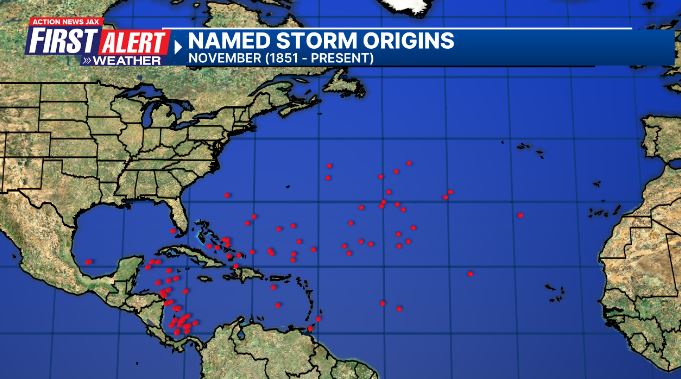Jacksonville, Fl. — The “Buresh Bottom Line”: Always be prepared!.....First Alert Hurricane Preparation Guide... City of Jacksonville Preparedness Guide... Georgia Hurricane Guide.
STAY INFORMED: Get the * FREE * First Alert Weather app
FREE NEWS UPDATES, ALERTS: Action News Jax app for Apple | For Android
WATCH “Preparing for the Storm”
WATCH “The Ins & Outs of Hurricane Season”
READ the First Alert Hurricane Center “Preparation Guide”
Federal Alliance for Safe Homes (FLASH) * here *.
***** ALWAYS CHECK & RE-CHECK THE LATEST FORECAST & UPDATES! ****
Tropics threats for Jacksonville/NE Florida/SE Georgia: The broad circulation of Rafael will enhance rainfall somewhat through Thu. along with continued onshore flow causing rough seas & surf & a high rip current risk at area beaches.
“Buresh Bottom Line”:
* After a Cat. 3 landfall late Wed. 40 miles SW of Havana, Rafael will move over the Gulf of Mexico through the weekend.
* Low pressure developing near the Southeast Bahamas
* “Mighty Milton” - Buresh Blog - recap of the hurricane including the forecast.
* “The Hell that was Helene” - Buresh Blog.
The Atlantic Basin Overview:

(1) Rafael:
A Hurricane WARNING: Cuban provinces of Pinar del Rio, Artemisa, La Habana, and Mayabeque
A Tropical Storm WARNING: Lower and Middle Florida Keys from Key West to west of the Channel 5 Bridge ... Dry Tortugas.



Tropical depression #18 formed Monday & was upgraded to a tropical storm a short time later over the Southern Gulf of Mexico before strengthening into the 11th hurricane of the Atlantic season Tue. evening. An eyewall replacement cycle occurred Wed. afternoon as Rafael made landfall near 4pm EDT on the southwest coast of Cuba about 40 miles SW of Havana.
Climavision ‘HorizonAI’ global model is below & has generally been a good “steady eddy” & compromise between other models this hurricane season. The forecast map below is for Fri., Nov. 8th showing a weakening Rafael pealing to the west over the Gulf of Mexico. The model has been pretty steady on intensity while definitely trending more west.
The upper level (~30,000 feet) forecast for Fri. indicates a strong trough over the Southern Plains to Northern Mexico with a ridge of high pressure over Florida. This set-up is pushing Rafael more west once over the Gulf of Mexico. It’s becoming more & more likely that Rafael will not make it to the U.S. Gulf coast. Virtually all global models now have joined the European model - more west over the Gulf which should allow Rafael to stay stronger longer as the hurricane stays a little south of the strongest shear & over warmer water. There will be increasing mid & upper level shear - out of the west 40+ mph - as well as an east-west zone of substantially dry air by late in the weekend into early next week which should increase the weakening process. So a strong hurricane initially over the Southern Gulf that will be weakening on its move west across the Gulf.
This track to the west matches up nicely with typhoon “Yinxing” over the Western Pacific which will be moving near the far northern tip of the Philippines. Essentially this “typhoon correlation” telegraphs movement of Rafael as upper level (jet stream) currents over the W. Pacific mirror the Western Atlantic.
So the bottom line: a strong hurricane moving across Cuba & looking strong & quite menacing over the far Southern Gulf before weakening the more northwest & west Rafael gets over the Gulf by the weekend into early next week.
No direct impacts for Florida but there will be heavy rain largely driven by a surge of tropical moisture around the circulation of “Rafael” on the west coast & Panhandle.... & driven by onshore flow on the east coast including - to at least some degree - Jacksonville/NE Fl./SE Ga. though amounts don’t look to be excessive for most of the Peninsula. Rainfall will be heaviest north & west of Jacksonville where a trough of low pressure will help enhance rain & storms.
There will not be “major” Rafael impacts for Florida though gusty winds & some heavy rain + some storm surge will impact the Lower Keys (1-2 feet) & Dry Tortugas (1-3 feet) through Thursday.
Shear out of the west/southwest increases markedly over the Gulf to 30-40+ mph:
7-Day rainfall forecast:




(2) There are indications of another system over the Southwest Atlantic over the weekend into early next week. The next area of low pressure looks to develop within a few days near the SE Bahamas & north of Puerto Rico & Hispaniola & should initially at least move westward. Forecast models are not overly strong with this low, but it’s something to keep an eye on with possibly an uptick in rain & gusty winds for the Bahamas, Hispaniola, South Florida & Cuba this weekend into early next week.


‘Velocity potential anomalies’ below shows “sinking” air (brown lines) across the Atlantic Basin which equates with a downturn in overall convection. With sinking air, tropical development can occur but overall conditions are not as conducive as when there is overall rising (green lines) air where convection is active. An upward “pulse” has centered itself over the Atlantic Basin which is aiding Rafael & possible future development of a low over the SW Atlantic followed by yet another *possible* system over the Caribbean at mid month.
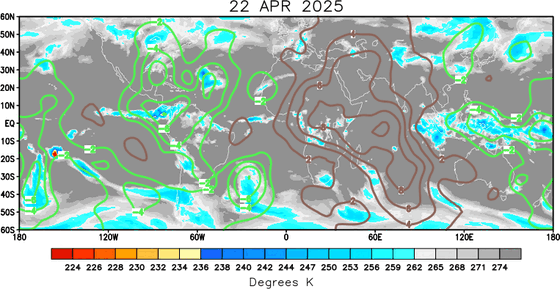
REMEMBER WHEN A TROPICAL STORM OR HURRICANE IS APPROACHING: Taping windows is *not* recommended & will not keep glass from breaking. Instead close curtains & blinds.
Realize the forecast cone (”cone of uncertainty”) is the average forecast error over a given time - out to 5 days - & *does not* indicate the width of the storm &/or where damage might occur.
The upper oceanic heat content (UOHC) [tropical cyclone heat potential/TCHP] across the SW Atlantic, Gulf & Caribbean is very high:
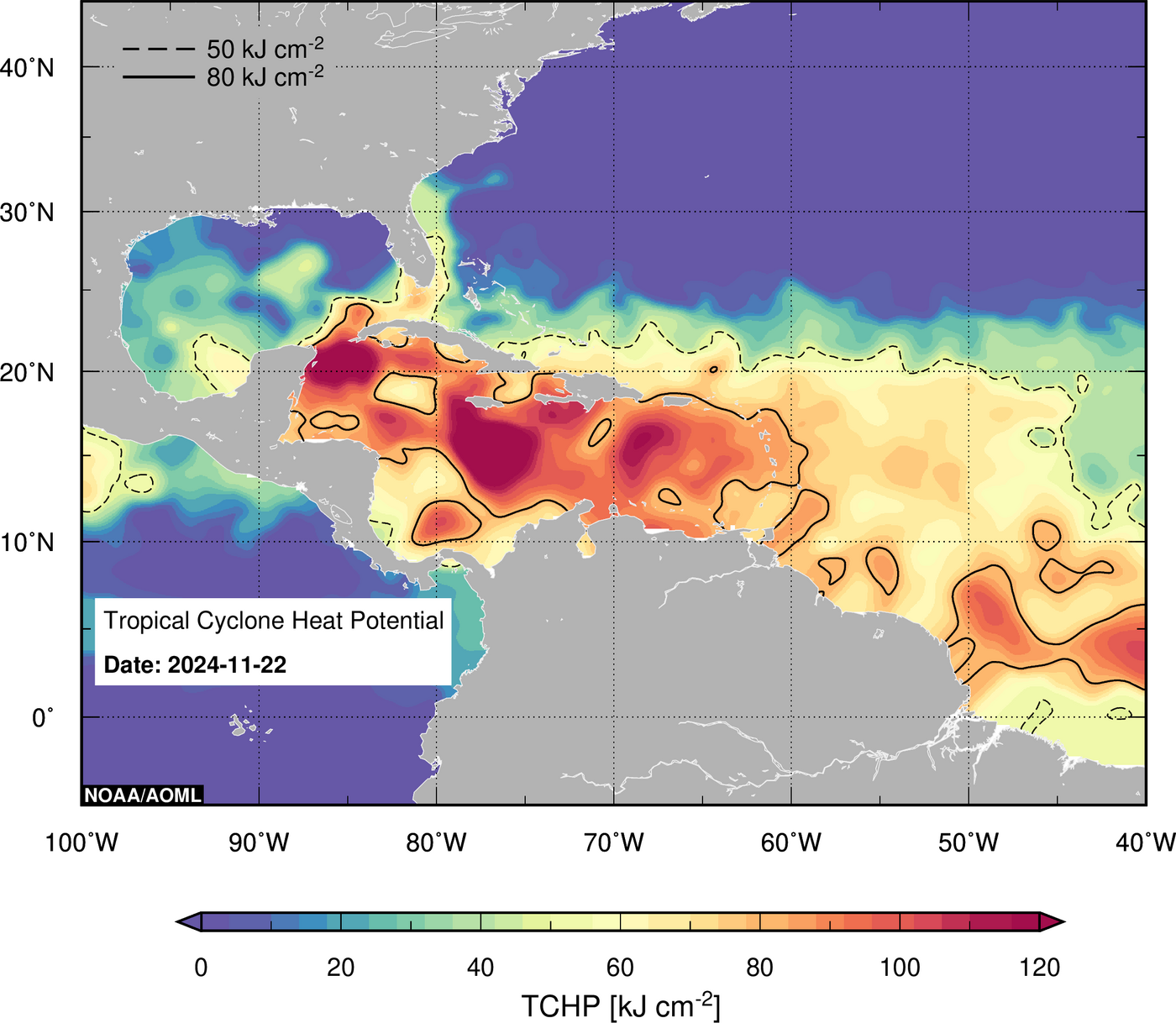
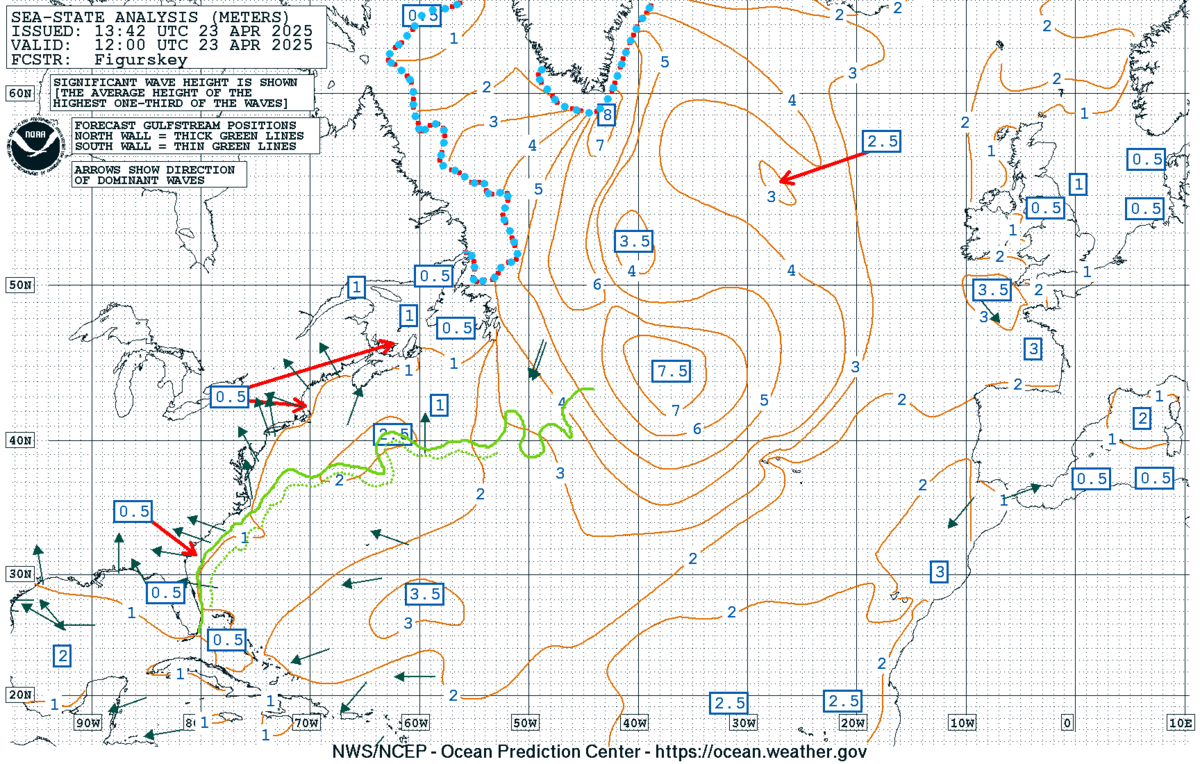




Water vapor loop (dark blue/yellow is dry mid & upper level air):


November tropical cyclone origins:
Averages below based on climatology for the Atlantic Basin for November:
Wind shear (red - strong shear; green - low shear):



Saharan dust spreads west each year from Africa driven by the prevailing winds (from east to west over the Atlantic). Dry air = yellow/orange/red/pink. Widespread dust is indicative of dry air that *can* interfere with the development of tropical cyclones. However, sometimes “wanna’ be” waves will just wait until they get to the other side of - or away from - the dust plume then try to develop if other conditions are favorable (we’ve already seen this with Beryl & Debby this year). In my personal opinion, there is way too much “hoopla” about the presence of Saharan dust & how it relates to tropical cyclones. In any case, the peak of Saharan dust typically is in June & July.

2024 names..... “Sara” is the next name on the Atlantic list (names are picked at random by the World Meteorological Organization... repeat every 6 years). Historic storms are retired [Florence & Michael in ’18 (the last time this year’s list was used)... Dorian in ’19 & Laura, Eta & Iota in ‘20, Ida in ‘21 & Fiona & Ian in ‘22]). In fact, this year’s list of names is rather infamous because of the ‘04 season when Charley, Frances, Jeanne & Ivan - all retired names - hit Florida within a matter of about 6 weeks. The WMO decided - beginning in 2021 - that the Greek alphabet will be no longer used & instead there will be a supplemental list of names if the first list is exhausted (has only happened three times - 2005, 2020 & 2021). The naming of tropical cyclones began on a consistent basis in 1953. More on the history of naming tropical cyclones * here *.

Hurricane season climatology:




East Atlantic:





Mid & upper level wind shear (enemy of tropical cyclones) analysis (CIMMS). The red lines indicate strong shear:
Water vapor imagery (dark blue indicates dry air):

Deep oceanic heat content over the Gulf, Caribbean & deep tropical Atlantic. The colors will brighten greatly as the water warms to greater depths deeper into the season:

Sea surface temp. anomalies:
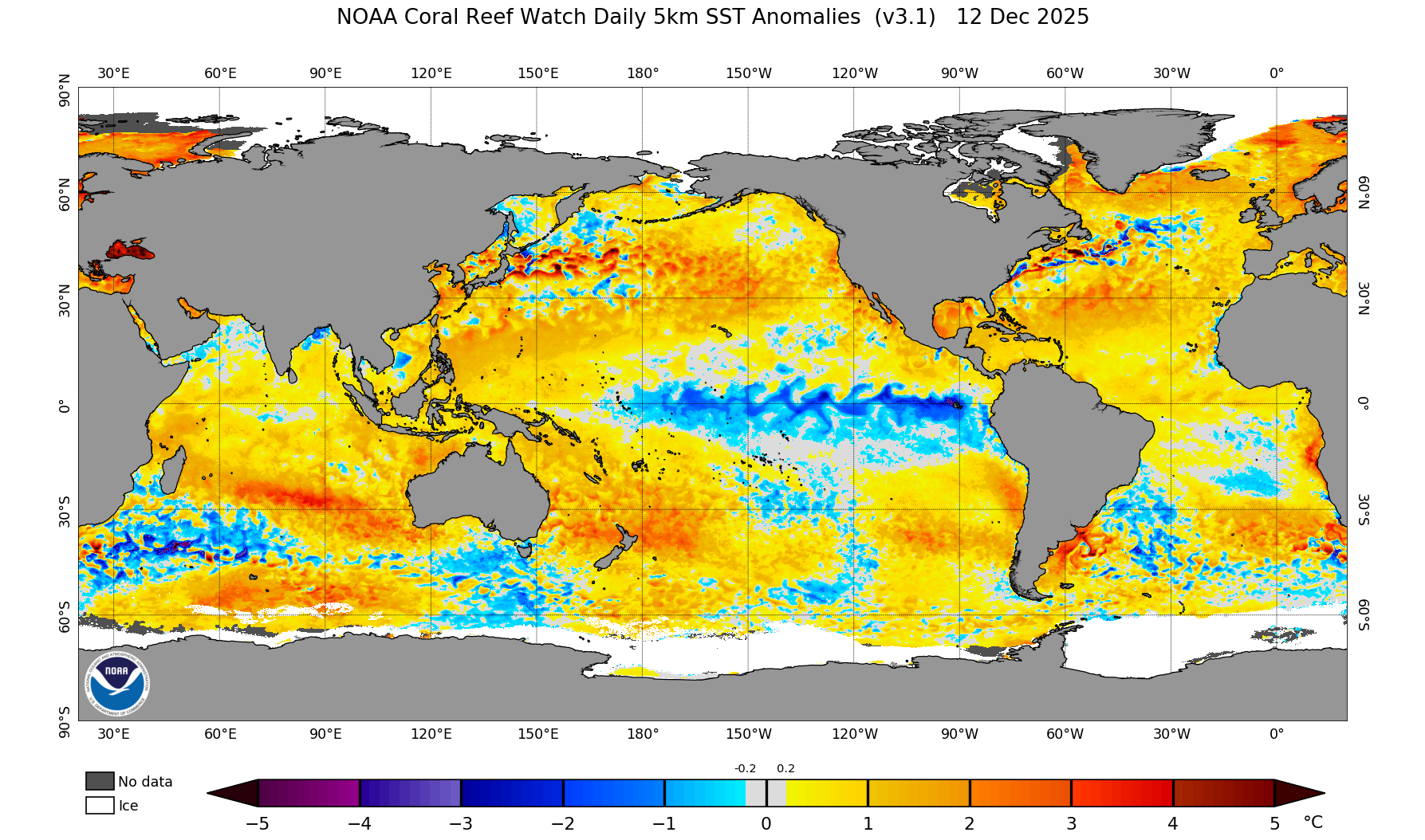

SE U.S. surface map:

Surface analysis centered on the tropical Atlantic:

Surface analysis of the Gulf:

Caribbean:

Atlantic Basin wave period forecast for 24, 48, 72 & 96 hours respectively:



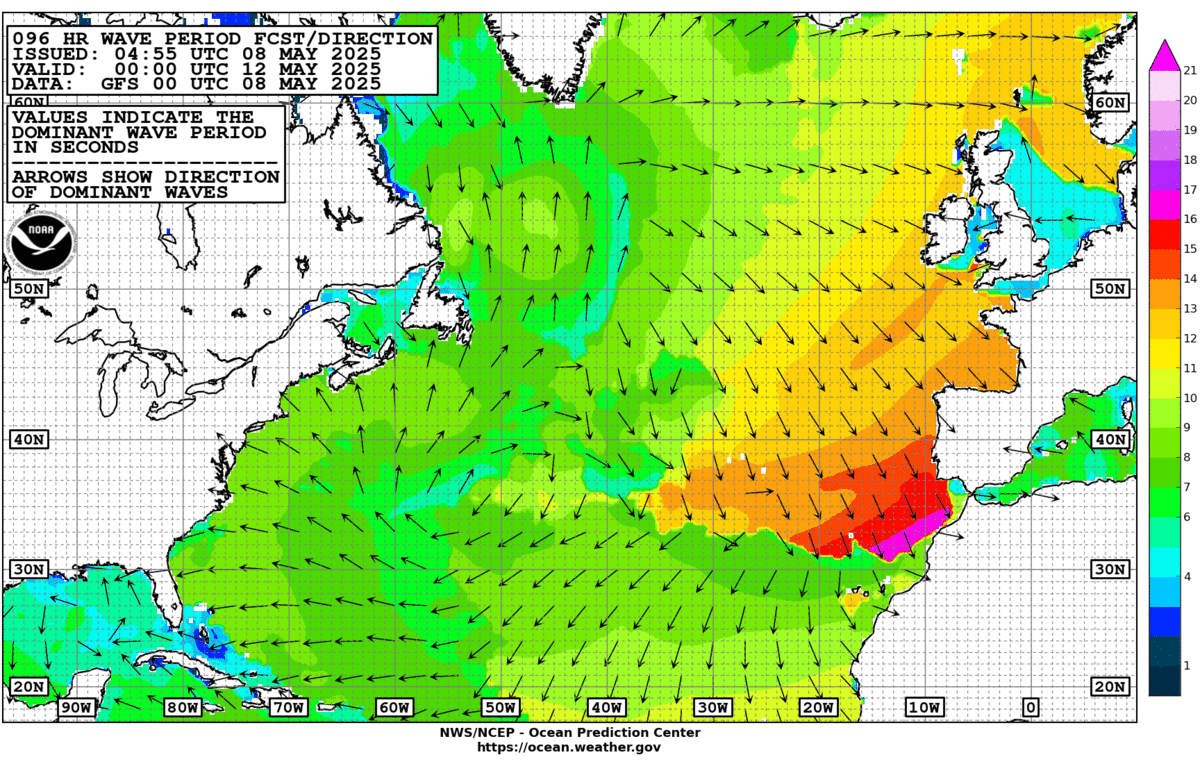

East & Central Pacific:





Central Pacific:
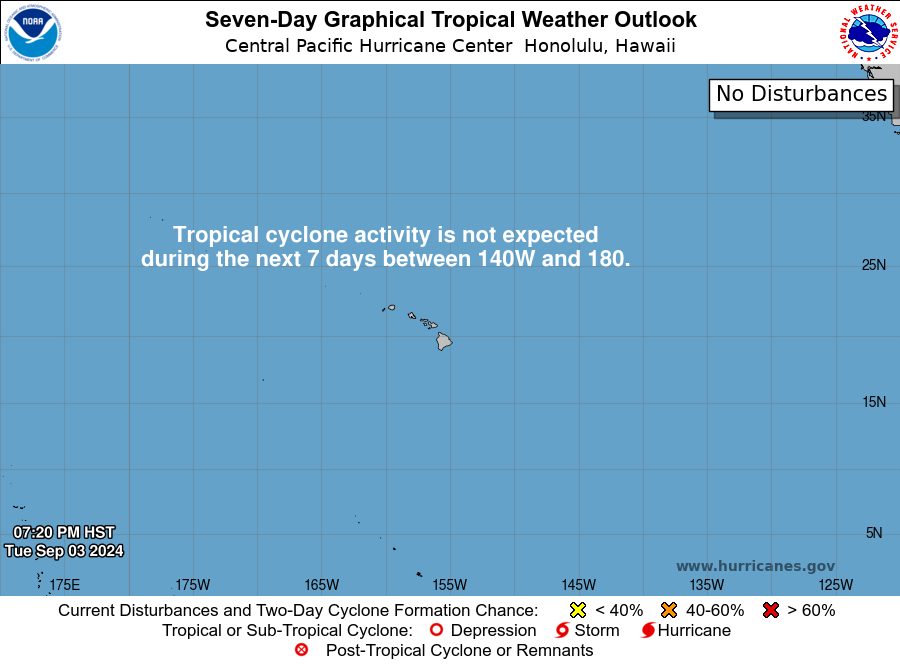
Hawaii satellite imagery:

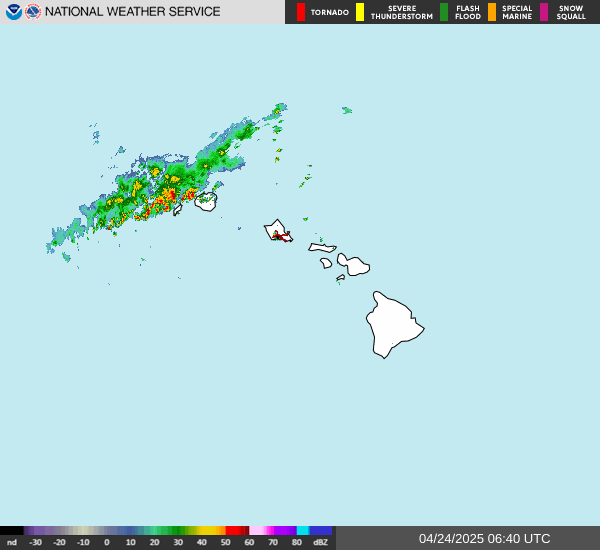
West Pacific:
“Yinxing”:


Global tropical activity:

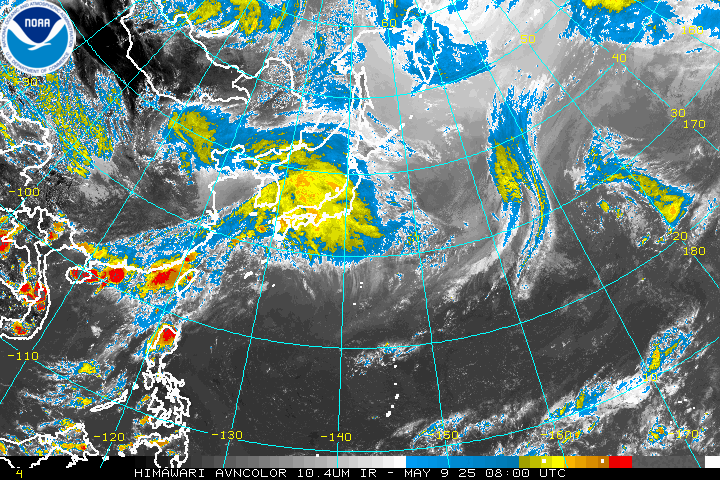
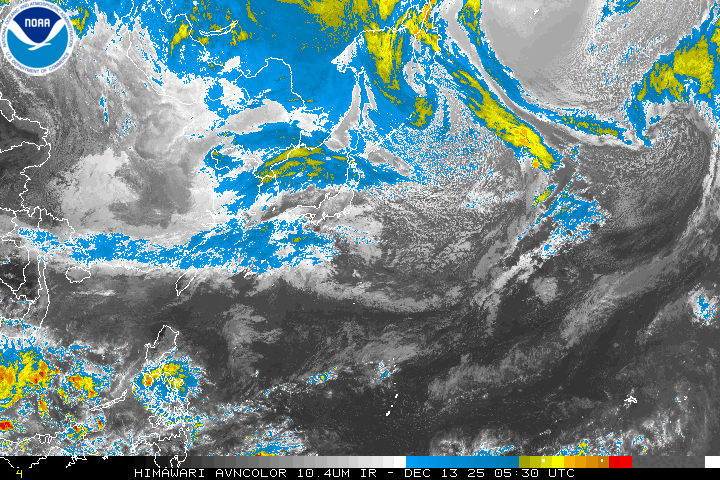
Cox Media Group


